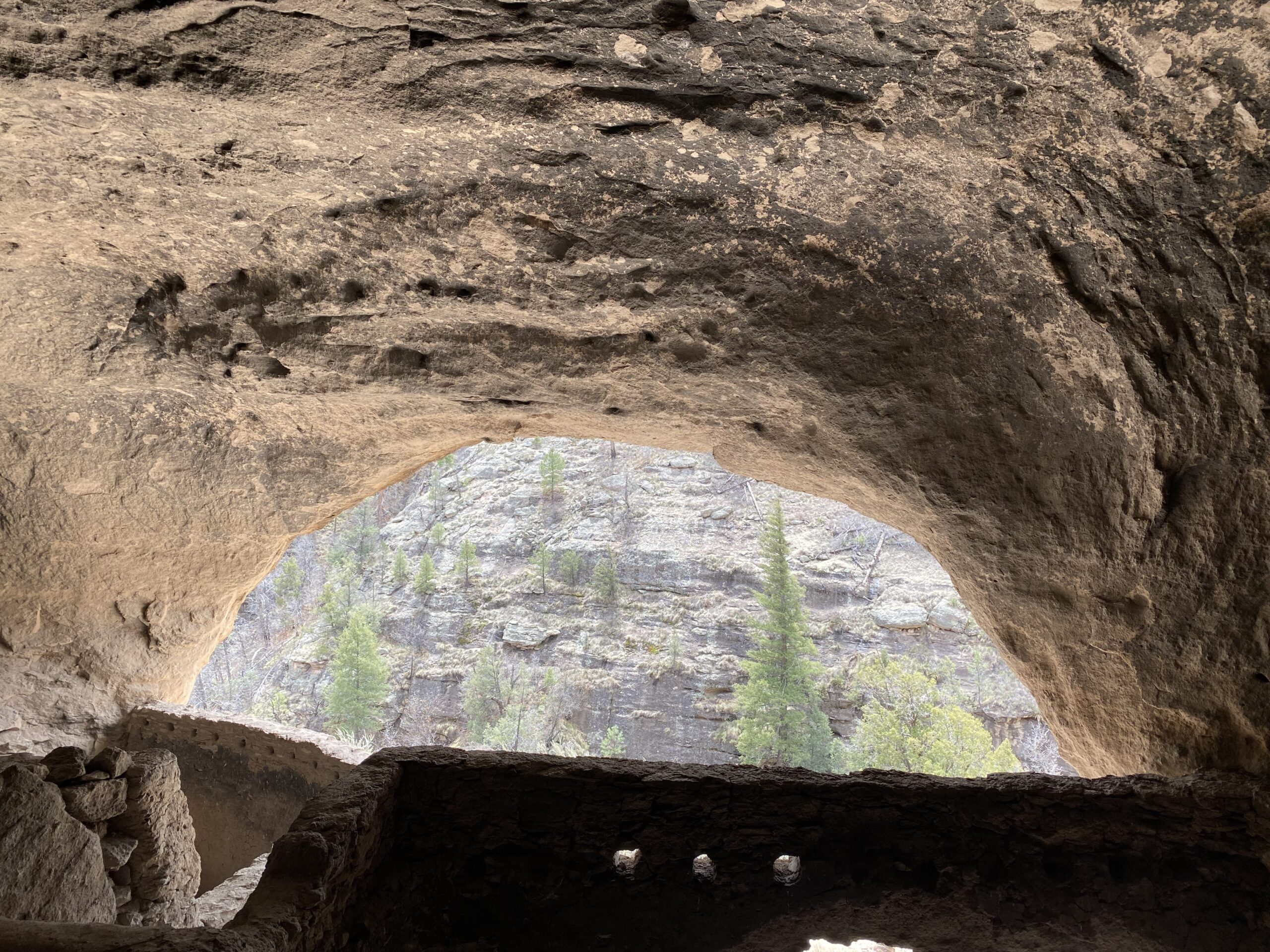Having survived a scare in Alamogordo, we moved on to our next destination: the Gila Cliff Dwellings National Monument. Originally, we had plans to stay closer to the monument, but ultimately decided to find a campground nearer to the highway in Deming, and make a day trip to the site. That turned out to be a great decision.
Coming from the south, through Silver City, the road to Gila Cliff Dwellings is a narrow, twisty route that would have been extremely stressful to drive towing a trailer. Although the site is 96 miles away from Deming, it took us nearly 2 1/2 hours to get there.
We arrived just in time to hike the half mile from the parking lot to the first cliff dwelling for the start of a 1 p.m. ranger-led tour.

The cliff dwellings here are as well preserved as any in the U.S. but the Gila site is one of the few that allow you to actually enter some of the rooms to get a close-up look. Archeologists have identified 46 rooms in the complex, which they believe housed about a dozen families. The ranger told us the entire region is dotted with archeological sites, mainly other cliff dwellings, the locations of which are being kept secret to avoid damage and because they’re hard to access.

The park service has built a paved trail up to the cliff dwellings you can visit, so foot traffic flows in an orderly clockwise loop from the visitor center past all of the buildings.

The dwellings were occupied by the Mogollon people for just a few decades, from the 1280s to the 1300s. With the protection of the caves, the structures are in remarkable condition, with their original wood beams still in place. By comparing the wood rings in the beams with trees in the surrounding valley, scientists learned that the residents came there during a drought. They were likely drawn to the area by the river that flows through the valley below, giving life to trees that provided food and materials, and allowing them to farm corn, beans and squash.
For some reason, popular culture always suggests that people living in any well-preserved ancient dwelling mysteriously vanished. Nothing could be further from the truth. The people came there for a specific reason and left for specific reasons as well. We just don’t always know why.

The dwellings give clues to how the people lived and what each room was used for. Some have ceilings blackened by smoke, others have storage areas. One section is still filled with original corn cobs, more than 800 years old, set aside for times when food is scarce. One wall shows the remnants of a decorative pattern, while others are adorned with pictographs in bright red hues.

The Mogollon likely chose the site for the protection offered by the caves and the benefits of living close to the river. But if people back then enjoyed a beautiful view, the site provided that as well.
After completing the tour, we drove back to the visitor’s center for a picnic lunch and then toured the museum that contained some of the artifacts found in the region. Then we faced another long slow drive back to modern civilization.
Days: 84
Miles Traveled: 11,365
Next stop: Tucson, Arizona


